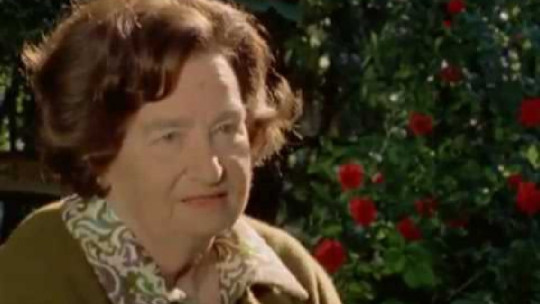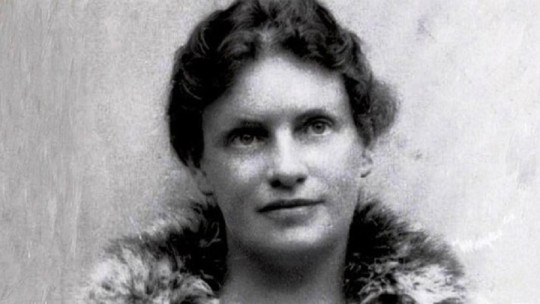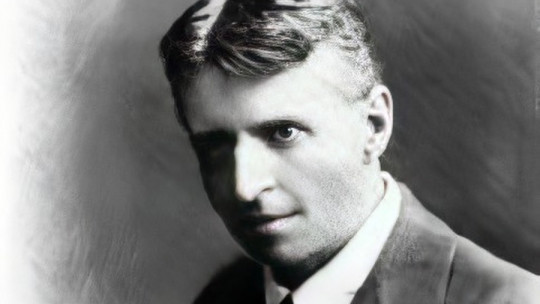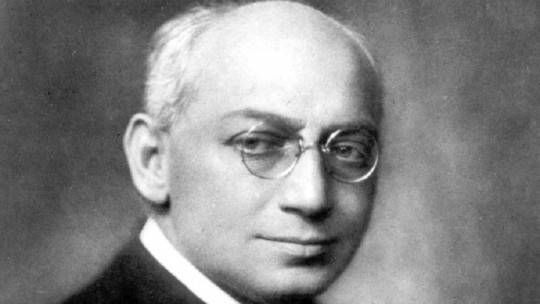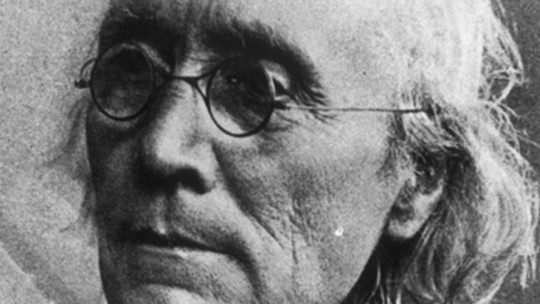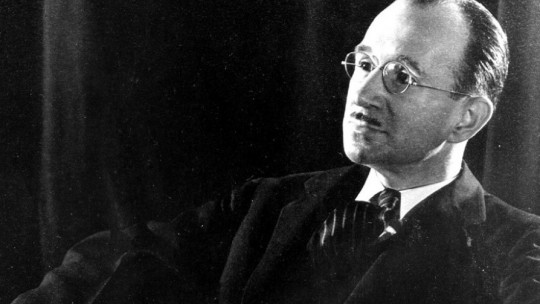Carl Gustav Jung He was born in July 1875 in Kesswil, Switzerland, into a very religious family. He was a withdrawn and lonely child, who spent much of his childhood without being able to interact with brothers or sisters. Partly because of this fact, he used to play with elements of nature and used his imagination to weave extravagant narrative lines about everything he experienced.
However, the unusual mental associations and symbolisms that populated the young Jung’s mind did not limit his reign to the hours he spent awake. Jung very soon began to have very vivid dreams with a strong symbolic load And, as expected from someone who dedicated much of his career to studying dreams, at least one of these dreams marked him for life.
Biography of Carl Gustav Jung
When he was barely three or four years old, Jung dreamed that he was descending into a dark rectangular hole that seemed to be dug in a meadow
When he reached the bottom of the hole, he found an arch from which a green curtain hung that seemed to block his way. Jung, moved by curiosity, pushed aside the curtain with one arm to find, on the other side, something resembling the royal chamber of a palace, with a high ceiling and a red carpet that described a path to an important place.
It all started with a dream
At the end of the carpet, presiding over the room, an impressive large royal throne, on which rested a strange creature: a tree-shaped monster, the consistency of human skin and with no face other than a single eye at the top of the trunk. The creature remained motionless and did not even show any signs of reacting to his presence, and yet Jung had the feeling that at any moment it could start crawling on the ground and quickly reach him. At that moment, he heard his mother shout from the entrance to the pit: “Look at it! It’s the man-eater!”
At that moment, pure terror made little Carl wake up Many years later, she offered an interpretation of this dream based on the phallic symbolism of the underground god and that of the green veil, which covers the mystery. And, although it may seem that experiencing this kind of nightmare is a very unpleasant experience, Jung came to consider that this dream was his beginning in the world of mysteries, the study of religion and symbols, and the functioning of what most Later it would be called the unconscious by psychoanalysts.
Jung’s predisposition towards spirituality
This dream, together with the great imagination and curiosity towards abstract topics that Jung had from a very early age, caused him to experiment more and more with the different ways of accessing the divine and the occult, normally through self-induced thoughts.
The fact that in his family there were so many people strongly related to Lutheranism and that his mother had erratic behavior that seemed not to fully respond to what was happening in the observable world (since she seemed to go through episodes of dissociation from the reality), made Jung born a double spirituality: one that was Lutheran and another that was based on ideas more related to paganism
Jung began to develop an extraordinary sensitivity to relate sensations and ideas that apparently had little in common. This was one of the characteristic features that defined Carl Gustav Jung’s way of thinking as we know it today, and that would lead him to easily adopt the approaches of psychoanalysis.
The university period
Upon reaching his second decade of life, Jung became an avid reader He was interested in many topics and found reading an excellent pastime, so that every time he answered a series of doubts about a topic, he was assailed by many others originating from his new base of knowledge. Furthermore, he was interested in developing as a person in two different senses: in everyday or social aspects and in topics related to the mysteries of life. Reading allowed him to have raw material with which to work to make progress on both sides, but his aspirations were never satisfied, which moved him to continue investigating.
Once he was old enough to go to university, Jung decided to study medicine at the University of Basel and he did so from 1894 to 1900. When he finished he began to work as an assistant in a hospital, and shortly after he opted for the specialty of psychiatry.
Practicing in this field, Carl Gustav Jung saw how he was able to address through his own work the two aspects that he was passionate about: the biological processes treated in medicine and psychic and even spiritual issues. Thus, from the year 1900 he began to practice in a mental institution in Zurich.
The relationship between Carl Gustav Jung and Sigmund Freud
Although the psychiatry from which Jung started to work in the psychiatric clinic proposed a materialist and reductionist vision of mental illness, he never renounced adopting elements and formulations from the thematic field of spiritualism, anthropology and even the study of art. Jung believed that The human mind could not be understood without renouncing the study of symbols and their roots in the history of human culture so he did not share the approach of what we understand today as psychiatry.
Therefore, Jung always moved in the tension between the material and the spiritual, something that earned him many enemies in the academic world. However, there was a researcher with a materialist philosophical base who interested him greatly, and his name was Sigmund Freud.

The importance of the unconscious and symbols
It was not surprising, given the central role that the concept of “the unconscious” plays in Freud’s psychoanalytic theory. Jung agreed with the neurologist that At the bottom of the human psyche lives a realm inaccessible to the consciousness that ultimately directs actions and thoughts of people and whose strength is expressed through primary impulses.
Jung and Freud began sending letters to each other in 1906, and a year later they met in Vienna. In their first meeting, according to Jung himself, they talked for about 13 hours.
More or less from their first meeting, in Vienna, Sigmund Freud He became a kind of mentor to the young psychiatrist , who had already been interested in psychoanalysis for a few years. However, although writings on the unconscious and impulses fascinated Jung, he did not agree with approaching the entire spectrum of mental processes and psychopathology as if everything were based on biological functions.
Jung’s disagreement with Freudian thought
This also led him to reject the idea that the cause of mental pathology is found in blocked processes related to human sexuality (Freud’s so-called “Sexual Theory”). Therefore, in a similar way to what the psychoanalyst Erik Erikson did, Jung took a large part of the psychoanalytic proposals of Sigmund Freud and added the cultural factor into the equation displacing the prominence of sexual impulses.
Jung, however, went far beyond materialist explanations, since his writings delve fully into explanations with an obscurantist tone, aimed at explaining phenomena of a spiritual nature that are usually approached from parapsychology and certain approaches to philosophy.
The unconscious, according to Jung
Jung believed that Freud’s portrait of the nature of the unconscious was incomplete without adding an important cultural factor. He maintained that in the psyche of each individual person there resides, indeed, a very important part that can be called “the unconscious”, but for Jung a part of this unconscious is, in fact, u a kind of “collective unconscious” or collective memory something that does not belong only to the individual.
The concept of unconscious collective
This collective memory It is full of all those symbols and recurring elements of meaning that the culture in which we live has been weaving throughout the generations. The collective memory that Jung describes, therefore, is an element that explains the similarities between the myths and symbols of all the cultures he studied no matter how different from each other they may seem to be.
These recurring elements did not exist only as a phenomenon to be studied from anthropology, but had to be addressed by the psychology of the time, since individual minds also operate based on these cultural schemes.
In this way, the culture and cultural legacy that is transmitted from generation to generation remains more or less the same over the centuries, creating a foundation in which the human psyche can take root and add learning based on the individual experiences of each one. These learnings and the way in which they are carried out, however, will be conditioned by the cultural substrate of this unconscious part of the psyche.
Jung and the archetypes
Thus, for Jung a part of the unconscious is made up of inherited memories , the raw material of culture. These memories are expressed through what Jung called “archetypes.”
Archetypes are the elements that make up collective memory, the result of the hereditary transmission of culture. These archetypes exist as embodiment in all cultural products made by humans (theater, painting, stories, etc.) but they also belong to the invisible world of each person’s unconscious, as if it were something latent. As they are elements that are characterized by hereditary transmission, They are basically universal, and can be found in different forms in practically all cultures
Cultural production as a key element to understand the human psyche
That is why Jung called attention to the fact that to understand the human mind it was also necessary to study its products, that is, its cultural productions In this way, Jung justified the need to relate psychology and anthropology, in addition to the study of the symbols used in obscurantist fields such as tarot.
Through the archetypes , whose etymology comes from what in ancient Greek translates as “original model”, we would be able to see a glimpse of how our common ancestors, the fathers and mothers of the rest of the cultures, perceived reality. But, in addition, through its study we can know the unconscious mechanisms through which we understand and organize our reality today. Archetypes serve, according to Jung, to describe the orography of a cultural nature on which our individual experiences are based.
A very varied legacy
Jung proposed a way of understanding psychology that at the time did not seem very conventional, and would be even less so today.
He was a person with multiple interests, and the nature of these sources of interest was not usually easy to describe in words. His legacy remains especially alive in psychoanalysis but also in the analysis of art and even in obscurantist-type studies.



